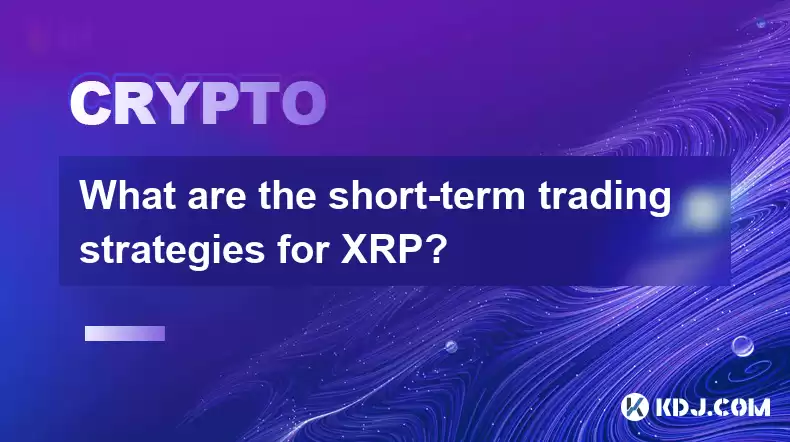-
 Bitcoin
Bitcoin $118700
1.60% -
 Ethereum
Ethereum $4230
-1.16% -
 XRP
XRP $3.197
-2.08% -
 Tether USDt
Tether USDt $1.000
-0.01% -
 BNB
BNB $803.3
-0.46% -
 Solana
Solana $183.2
0.06% -
 USDC
USDC $0.9999
0.00% -
 Dogecoin
Dogecoin $0.2343
-3.95% -
 TRON
TRON $0.3390
1.00% -
 Cardano
Cardano $0.8020
-1.93% -
 Hyperliquid
Hyperliquid $45.18
2.39% -
 Chainlink
Chainlink $22.04
3.02% -
 Stellar
Stellar $0.4449
-1.66% -
 Sui
Sui $3.872
-2.14% -
 Bitcoin Cash
Bitcoin Cash $570.6
-0.37% -
 Hedera
Hedera $0.2593
-2.92% -
 Ethena USDe
Ethena USDe $1.001
-0.01% -
 Avalanche
Avalanche $23.83
-3.79% -
 Litecoin
Litecoin $124.5
1.83% -
 Toncoin
Toncoin $3.335
-2.74% -
 UNUS SED LEO
UNUS SED LEO $9.029
0.26% -
 Shiba Inu
Shiba Inu $0.00001363
-2.31% -
 Uniswap
Uniswap $10.93
-1.42% -
 Polkadot
Polkadot $4.060
-2.29% -
 Dai
Dai $1.000
-0.01% -
 Cronos
Cronos $0.1631
2.71% -
 Ethena
Ethena $0.7746
3.06% -
 Pepe
Pepe $0.00001208
-3.73% -
 Bitget Token
Bitget Token $4.445
-1.47% -
 Monero
Monero $268.7
-2.30%
What are the short-term trading strategies for XRP?
Short-term XRP trading uses scalping, day trading, and swing trading, leveraging technical analysis (moving averages, RSI, MACD) and strict risk management to capitalize on XRP's volatility, while monitoring market sentiment and news.
Mar 06, 2025 at 08:49 am

Key Points:
- XRP's volatility presents opportunities for short-term traders.
- Scalping, day trading, and swing trading are common strategies.
- Technical analysis is crucial for identifying entry and exit points.
- Risk management is paramount due to XRP's price fluctuations.
- Understanding market sentiment and news events is vital.
What are the short-term trading strategies for XRP?
XRP, with its inherent volatility, offers enticing prospects for short-term traders aiming for quick profits. However, this volatility also presents significant risks. Successful short-term trading hinges on a deep understanding of market dynamics and a robust risk management strategy. Let's explore several approaches.
Scalping XRP:
Scalping involves exploiting tiny price fluctuations within minutes or even seconds. This high-frequency trading demands rapid decision-making and access to advanced charting tools. Scalpers use technical indicators like moving averages and RSI to identify fleeting opportunities. Profits are modest per trade, but frequent trades aim for cumulative gains. However, transaction fees can significantly eat into profits if not carefully managed.
Day Trading XRP:
Day trading focuses on holding positions for a single trading day. Traders capitalize on intraday price swings, aiming to close all positions before the market closes. This strategy often involves utilizing technical analysis, such as candlestick patterns, to identify potential reversals or breakouts. Successful day traders must be adept at reading market sentiment and reacting quickly to news events that can impact XRP's price.
Swing Trading XRP:
Swing trading involves holding positions for several days or even weeks, capitalizing on larger price swings. This strategy requires a longer-term perspective than scalping or day trading. Traders might use indicators like MACD or Bollinger Bands to identify potential entry and exit points. Swing trading demands patience and the ability to withstand short-term price fluctuations without panicking. News events and overall market sentiment play a significant role in swing trading success.
Technical Analysis for XRP Short-Term Trading:
Technical analysis forms the cornerstone of successful short-term XRP trading. Several tools and indicators prove invaluable:
- Moving Averages: These smooth out price fluctuations, helping identify trends and potential support/resistance levels. Commonly used are the 20-period and 50-period moving averages.
- Relative Strength Index (RSI): The RSI measures the magnitude of recent price changes to evaluate overbought or oversold conditions. Readings above 70 often suggest an overbought market, while readings below 30 indicate an oversold market.
- MACD (Moving Average Convergence Divergence): This indicator identifies momentum changes and potential trend reversals. Crossovers of the MACD lines can signal buying or selling opportunities.
- Bollinger Bands: These bands show price volatility and potential reversals. Prices bouncing off the lower band might suggest a buying opportunity, while touching the upper band might signal a selling opportunity.
- Candlestick Patterns: These patterns reveal information about the buying and selling pressure at specific price points. Identifying patterns like hammers, engulfing patterns, or dojis can provide valuable insights into potential price movements.
Risk Management in XRP Short-Term Trading:
Risk management is crucial in short-term trading, especially with a volatile asset like XRP. Employing these strategies is vital:
- Position Sizing: Never risk more capital than you can afford to lose on a single trade. A common rule of thumb is to risk no more than 1-2% of your total trading capital per trade.
- Stop-Loss Orders: These orders automatically sell your XRP when the price falls to a predetermined level, limiting potential losses.
- Take-Profit Orders: These orders automatically sell your XRP when the price reaches a predetermined level, securing your profits.
- Diversification: Don't put all your eggs in one basket. Diversify your portfolio across multiple assets to mitigate risk.
Market Sentiment and News Events:
Understanding market sentiment and responding to news events is crucial for short-term XRP trading. Keep an eye on:
- Social Media Sentiment: Track online discussions and sentiment towards XRP on platforms like Twitter and Reddit.
- Regulatory News: Stay informed about any regulatory developments that could affect XRP's price.
- Exchange Listings: New exchange listings can significantly impact XRP's liquidity and price.
- Technological Developments: Keep abreast of any technological advancements within the XRP ecosystem.
Frequently Asked Questions:
Q: Is short-term XRP trading profitable?
A: Profitability depends on your trading skills, risk management, and market conditions. While potential profits exist, losses are also possible.
Q: What are the biggest risks of short-term XRP trading?
A: The volatility of XRP is the biggest risk. Rapid price swings can lead to significant losses if not managed properly. Other risks include transaction fees and the emotional toll of frequent trading.
Q: What resources are helpful for learning about short-term XRP trading?
A: Numerous online resources, including educational websites, trading platforms, and communities, offer information on technical analysis, risk management, and trading strategies. However, always be cautious of misleading information.
Q: How much capital do I need to start short-term XRP trading?
A: There's no minimum, but starting with a smaller amount allows you to learn and practice without significant risk. Consider your risk tolerance and only invest what you can afford to lose.
Q: Are there any specific times of day that are better for short-term XRP trading?
A: Liquidity and volatility can vary throughout the day, depending on global market activity. Monitoring trading volume and price action can help identify optimal trading times.
Disclaimer:info@kdj.com
The information provided is not trading advice. kdj.com does not assume any responsibility for any investments made based on the information provided in this article. Cryptocurrencies are highly volatile and it is highly recommended that you invest with caution after thorough research!
If you believe that the content used on this website infringes your copyright, please contact us immediately (info@kdj.com) and we will delete it promptly.
- LYNO AI & XRP: Decoding the ROI Potential in a Shifting Crypto Landscape
- 2025-08-11 04:30:11
- Cryptos on the Cusp: Cold Wallet, Price Breakouts, and What's Hot Now
- 2025-08-11 04:50:11
- Dogecoin, Meme Coins, and Remittix Utility: What's the Hype?
- 2025-08-11 04:50:11
- Altcoin Buyouts & Market Removals: Crypto Development's Wild Ride
- 2025-08-11 04:30:11
- Bitcoin Banks Arrive: El Salvador's Bold Play with Investment Banks and Crypto
- 2025-08-11 04:55:12
- Gemini AI's Crypto Crystal Ball: Predicting 1000x Gains with Meme Coins?
- 2025-08-11 02:50:12
Related knowledge

How to purchase Aragon (ANT)?
Aug 09,2025 at 11:56pm
Understanding Aragon (ANT) and Its PurposeAragon (ANT) is a decentralized governance token that powers the Aragon Network, a platform built on the Eth...

Where to trade Band Protocol (BAND)?
Aug 10,2025 at 11:36pm
Understanding the Role of Private Keys in Cryptocurrency WalletsIn the world of cryptocurrency, a private key is one of the most critical components o...

What is the most secure way to buy Ocean Protocol (OCEAN)?
Aug 10,2025 at 01:01pm
Understanding Ocean Protocol (OCEAN) and Its EcosystemOcean Protocol (OCEAN) is a decentralized data exchange platform built on blockchain technology,...

Where can I buy UMA (UMA)?
Aug 07,2025 at 06:42pm
Understanding UMA and Its Role in Decentralized FinanceUMA (Universal Market Access) is an Ethereum-based decentralized finance (DeFi) protocol design...

How to buy Storj (STORJ) tokens?
Aug 09,2025 at 07:28am
Understanding Storj (STORJ) and Its Role in Decentralized StorageStorj is a decentralized cloud storage platform that leverages blockchain technology ...

What is the best app to buy Nano (NANO)?
Aug 09,2025 at 03:35am
Understanding Nano (NANO) and Its Unique FeaturesNano is a feeless, instant cryptocurrency designed for fast peer-to-peer transactions. Unlike many ot...

How to purchase Aragon (ANT)?
Aug 09,2025 at 11:56pm
Understanding Aragon (ANT) and Its PurposeAragon (ANT) is a decentralized governance token that powers the Aragon Network, a platform built on the Eth...

Where to trade Band Protocol (BAND)?
Aug 10,2025 at 11:36pm
Understanding the Role of Private Keys in Cryptocurrency WalletsIn the world of cryptocurrency, a private key is one of the most critical components o...

What is the most secure way to buy Ocean Protocol (OCEAN)?
Aug 10,2025 at 01:01pm
Understanding Ocean Protocol (OCEAN) and Its EcosystemOcean Protocol (OCEAN) is a decentralized data exchange platform built on blockchain technology,...

Where can I buy UMA (UMA)?
Aug 07,2025 at 06:42pm
Understanding UMA and Its Role in Decentralized FinanceUMA (Universal Market Access) is an Ethereum-based decentralized finance (DeFi) protocol design...

How to buy Storj (STORJ) tokens?
Aug 09,2025 at 07:28am
Understanding Storj (STORJ) and Its Role in Decentralized StorageStorj is a decentralized cloud storage platform that leverages blockchain technology ...

What is the best app to buy Nano (NANO)?
Aug 09,2025 at 03:35am
Understanding Nano (NANO) and Its Unique FeaturesNano is a feeless, instant cryptocurrency designed for fast peer-to-peer transactions. Unlike many ot...
See all articles

























































































